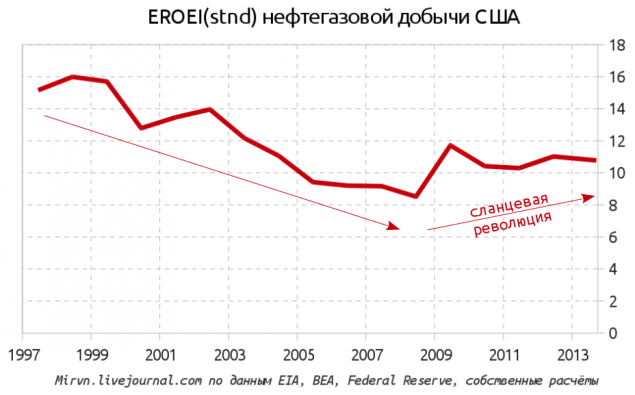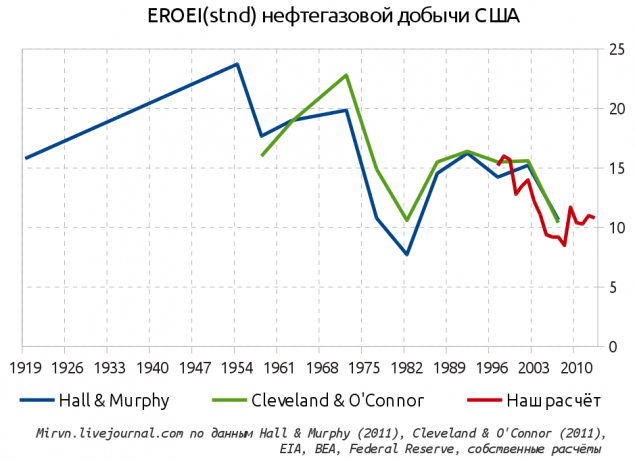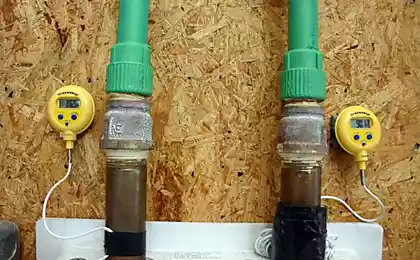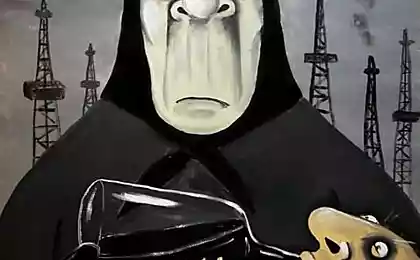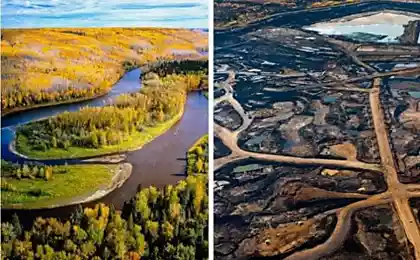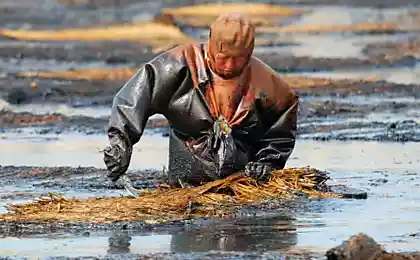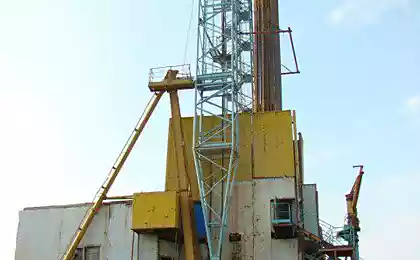1510
Whether humanity will die in "heat death"?
Scenarios "myvseumrёm" have always been and will be popular. At least, this is a convenient way to attract attention and make the reader groan and gasp. Subjects energy is no exception, and here there are two main apocalypse - one of them is peak oil. The concept of peak oil became widespread when oil prices are high and goes into oblivion low. So, back in 2008, all written about peak oil in 2012, and later it came and in RuNet. Fortunately, world oil production from those years are still growing, so proponents of the theory had to reduce his theory of "peak oil at all" to particulars: "production peak easily accessible oil" or "peak production of conventional oil." The reason for mentioning "easy availability" is the second "apocalypse" - in reducing the rate of energy profitability (EROEI), by analogy with the economic profitability (ROI). About him and talk.
What is EROEI? Imagine a cheetah for hunting antelope. Antelope meat contains protein and fat, which give the cheetah energy, so necessary for existence. If a cheetah owned thermodynamics, before each hunt he should calculate how much energy he spent on chasing antelope and how much it will receive from the meat. If he is going to hunt antelope, and catch a result, only the mouse, which can not even compensate for the loss of energy to hunt, it is obvious that it was better that day did not hunt.
The ratio of produced energy to the cheetah spent and will be called the coefficient EROEI. If a cheetah antelope meat will get 20 joules, and spend 1, the EROEI hunting cheetah will be equal to 20: 1. It is obvious that EROEI = 1 is a critical value below which the energy source, in fact, no longer a source of energy, and even becomes a burden.
If there is a cheetah antelope, then we have oil, gas and coal. They meet the needs of mankind in energy by 92%, ie almost entirely. And if the extraction of energy resources and the rest will be spent more energy than they concluded, then mankind will be without power for their existence and condemned to eternal torment growth of entropy and death, according to the second law of thermodynamics. Generally, an allegory of this article goes to аналогичному scenario for the universe. Therefore, the second apocalyptic scenario implies a decrease EROEI energy to one or less. To deal with this scenario should refer to the actual values EROEI, but the thing - EROEI calculation quite laborious, vague, and most importantly - does not accept any commercial value. Outcome is predictable - there are many estimates of economic profitability of anything, and the energy involved in only a few researchers around the world.
Since we are talking about "myvseumrёm" that should be explored EROEI most developed energy resources. It is best to consider the US oil and gas sector - in the middle of the 20th century there was mined a huge amount of oil and gas, even by today's standards, the peak of conventional oil was passed back in the 70s. It is difficult to imagine something more exhausted, and that's why the local oil and gas industry moves from traditional production of hydrocarbons on the "shale" gas and oil.
Past studies EROEI h4> Because:
Methodology ESTIMATE h4> All studies were performed EROEI US oil and gas group of researchers under the leadership of or participation ideological mastermind - Charles Hall as the "inventor" of the concept. Of course, I want to be able to compare the results of different studies in the context of the United States and around the world, and it requires the same methodology - how and what to consider and take into account? Collective chops with shoulder - introduces 15 different EROEI , giving each its own index. Approach, in our opinion, is logical and they can portray this table:
What is EROEI? Imagine a cheetah for hunting antelope. Antelope meat contains protein and fat, which give the cheetah energy, so necessary for existence. If a cheetah owned thermodynamics, before each hunt he should calculate how much energy he spent on chasing antelope and how much it will receive from the meat. If he is going to hunt antelope, and catch a result, only the mouse, which can not even compensate for the loss of energy to hunt, it is obvious that it was better that day did not hunt.
The ratio of produced energy to the cheetah spent and will be called the coefficient EROEI. If a cheetah antelope meat will get 20 joules, and spend 1, the EROEI hunting cheetah will be equal to 20: 1. It is obvious that EROEI = 1 is a critical value below which the energy source, in fact, no longer a source of energy, and even becomes a burden.
If there is a cheetah antelope, then we have oil, gas and coal. They meet the needs of mankind in energy by 92%, ie almost entirely. And if the extraction of energy resources and the rest will be spent more energy than they concluded, then mankind will be without power for their existence and condemned to eternal torment growth of entropy and death, according to the second law of thermodynamics. Generally, an allegory of this article goes to аналогичному scenario for the universe. Therefore, the second apocalyptic scenario implies a decrease EROEI energy to one or less. To deal with this scenario should refer to the actual values EROEI, but the thing - EROEI calculation quite laborious, vague, and most importantly - does not accept any commercial value. Outcome is predictable - there are many estimates of economic profitability of anything, and the energy involved in only a few researchers around the world.
Since we are talking about "myvseumrёm" that should be explored EROEI most developed energy resources. It is best to consider the US oil and gas sector - in the middle of the 20th century there was mined a huge amount of oil and gas, even by today's standards, the peak of conventional oil was passed back in the 70s. It is difficult to imagine something more exhausted, and that's why the local oil and gas industry moves from traditional production of hydrocarbons on the "shale" gas and oil.


